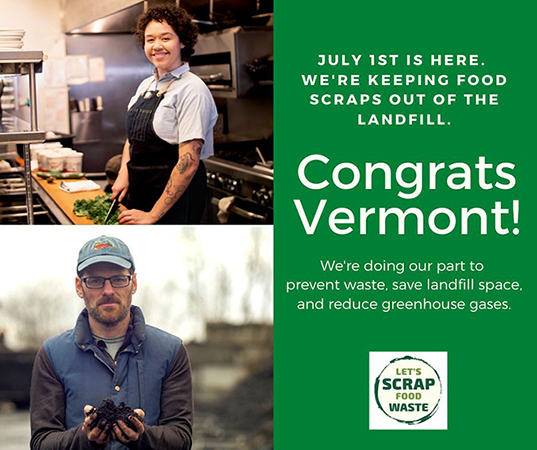Last Wednesday, July 1, 2020 was a long awaited day in the State of Vermont. By sheer coincidence, I was speaking with someone from the Vermont Agency of Natural Resources who asked me, “Nora, do you know what today is?” I thought for about 15 seconds, and then exclaimed, “Oh my goodness, it is July 1, 2020!! Congratulations! It’s all food scraps out of the landfill day!”
In July 2012, the Vermont legislature passed, and the Governor signed into law, Act 148, the Universal Recycling Act, which banned landfill disposal of plastic, aluminum and metal containers, tin foil, paper/cardboard, leaf/yard residuals and food scraps. The law made Vermont the first state in the U.S. to require that all food scraps be recycled from all sectors (commercial, institutional, residential) by 2020. Mandatory compliance was phased in over six years, beginning with the largest generators of organic waste (104 tons/year of food scraps generated) on July 1, 2014 — if an organics recycling facility was within 20 miles, had available capacity, and was willing to accept the food residuals. All food scraps are now banned from landfill as of July 1, 2020, including from the residential sector.
At its December 2019 Universal Recycling Stakeholders Meeting, the Vermont Department of Environmental Conservation (VT DEC) gave an update on food scrap management capacity in the state. Using data from the 2018 Vermont Waste Composition Study, VT DEC estimates that about 80,000 tons of food residuals are disposed annually, with about 30,000 tons of that in packaging (38%). In terms of food scrap management capacity, VT DEC estimates that about 62,000 tons/year of capacity will be needed by 2022; expected processing capacity to be available is around 61,000 tons/year. The highest management capacity that may be available, taking into account facility expansions, is almost 81,000 tons/year.
—Nora Goldstein













